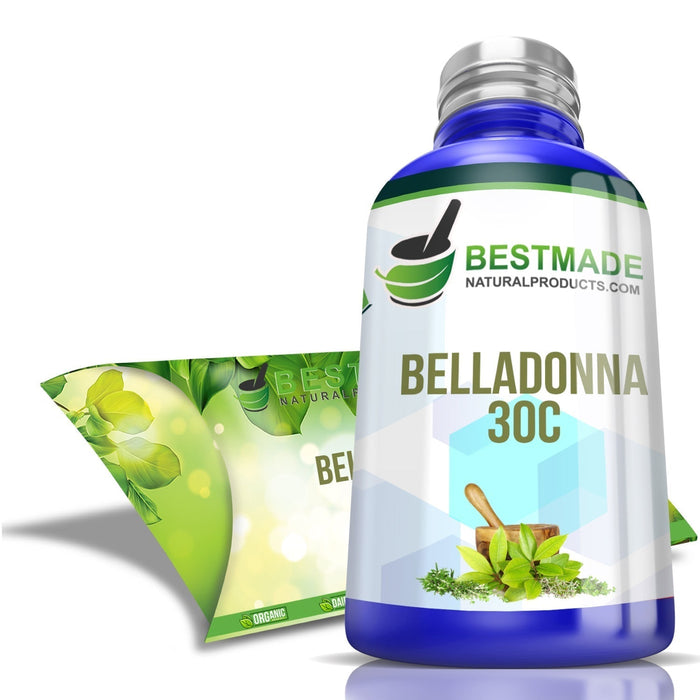
Self-Improvement Tips for Optimal Health
Are you ready to take the first step towards a healthier, happier you?
Welcome to the journey towards healthful living! In this comprehensive guide, we will explore practical tips and strategies for improving your well-being and vitality.
The path to healthful living is not about perfection or strict rules; it's about making small, sustainable changes that add up over time. Whether you're looking to improve your diet, increase your fitness levels, enhance your mental well-being, or explore alternative approaches to wellness, this guide has something for everyone.
By incorporating these self-improvement tips into your daily life, you can cultivate habits that support your physical, mental, and emotional health.
Remember, health is not just the absence of illness but a state of complete physical, mental, and social well-being.
BIO24 may provide energy and help you cope with stress. Supports your body's ability to manage, absorb, and use nutrients while boosting your physical health and immune system. It is a useful remedy to keep you alert, fresh, and stress-free all day.
Setting the Stage for Healthful Living
So, let's begin this journey with an open mind and a commitment to self-care. Whether you're taking your first steps towards healthful living or enhancing your wellness routine, there's always room for growth and improvement.
Your health is your greatest asset, and investing in it will pay dividends for years to come.
1. Diet Tips for Healthful Living
What you eat plays a crucial role in optimal health. Here are some simple yet effective diet tips to guide you toward a balanced and nourishing eating plan:
Understanding Balanced Nutrition
- Your body needs a variety of nutrients to function at its best. Aim to include a mix of carbohydrates, proteins, healthy fats, vitamins, and minerals in your meals.
Instead of focusing on strict diets, strive for a balanced approach that includes a variety of foods from different food groups.

Incorporating Whole Foods
- Whole foods are minimally processed and close to their natural state. Think fruits, vegetables, whole grains, lean proteins, and healthy fats like avocados and nuts.
- These foods are packed with nutrients and fiber, which can help keep you feeling full and satisfied.
Managing Portion Sizes
- Pay attention to portion sizes to avoid overeating. Use visual cues like your hand or a standard measuring cup to gauge appropriate portions.
- Eating slowly and mindfully can also help you tune in to your body's hunger and fullness cues, preventing overindulgence.
Hydration
- Staying hydrated is essential for overall health. Aim to drink plenty of water throughout the day, and consider hydrating foods like fruits and vegetables.
- Limit sugary drinks and excessive caffeine, as they can lead to dehydration and energy crashes.
Mindful Eating Practices
- Practice mindful eating by paying attention to the sensory experience of eating.
- Chew slowly, savoring the flavors and textures of your food.
- Avoid distractions like screens or multitasking while eating, as they can lead to mindless overeating.
Incorporating these simple diet tips into your daily routine can nourish your body and support your journey towards healthful living.
Remember, small changes over time can significantly improve your overall well-being.
2. Exercise and Fitness for Well-being
Regular physical activity is essential for maintaining good health and overall well-being. Here are some tips to help you incorporate exercise into your daily routine:
Importance of Regular Physical Activity
- Understand that exercise is not just about losing weight or building muscles; it's about keeping your body strong, flexible, and healthy.
- Regular exercise can improve mood, boost energy levels, and reduce your risk of chronic diseases like heart disease and diabetes.
Finding an Exercise Routine That Works for You
- Experiment with different types of physical activity to find what you enjoy and what fits into your lifestyle, whether walking, jogging, swimming, dancing, or playing sports.
- Choose activities that you look forward to and can sustain long-term.

Combining Cardiovascular, Strength, and Flexibility Training
- A well-rounded exercise routine includes a mix of cardiovascular, strength, and flexibility exercises.
- Cardiovascular activities like brisk walking or cycling help strengthen your heart and lungs.
- Strength training exercises like lifting weights or bodyweight exercises build muscle and bone strength.
- Flexibility exercises like stretching or yoga improve your range of motion and reduce the risk of injury.
Tips for Staying Active Throughout the Day
- Look for opportunities to incorporate movement into your daily life, even if you don't have time for a formal workout.
- Take the stairs instead of the elevator, walk or bike to nearby destinations, or do simple exercises like squats or lunges while watching TV.
- Every little bit of movement adds up and contributes to your overall health.
By prioritizing regular physical activity and finding ways to stay active throughout the day, you can improve your fitness levels, boost your mood, and enhance your overall quality of life.
Start small, set achievable goals, and gradually increase your activity level over time for long-lasting health benefits.
3. Mental Health Tips for Emotional Well-being
Taking care of your mental health is as important as caring for your physical health. Here are some practical tips to support your emotional well-being:
Understanding the Mind-Body Connection
- Recognize that your thoughts and emotions can impact your physical health and vice versa.
- Practice self-awareness to identify patterns and triggers that affect your mood and well-being.
Practicing Stress Management Techniques
- Find healthy ways to cope with stress, such as deep breathing, meditation, yoga, or engaging in hobbies you enjoy.
- Taking breaks throughout the day to relax and recharge can help reduce overwhelming feelings.
Stress Relief & Anxiety Control may provide support and relief for anxiety, nervousness, stress, tension, panic attacks, restlessness, and irritability.
Importance of Sleep for Mental Health
- Prioritize good sleep hygiene to support your mental well-being.
- Aim for 7-9 hours of quality sleep each night by creating a relaxing bedtime routine.
- Avoid caffeine and screens before bed, and create a comfortable sleep environment.
Cultivating Healthy Relationships and Boundaries
- Surround yourself with supportive people who uplift and encourage you.
- Communicate openly and assertively with others.
- Set boundaries to protect your mental and emotional health.
Mindfulness and Meditation Practices
- Incorporate mindfulness into your daily life by being present in the moment and practicing gratitude.
- Meditation can help calm the mind, reduce anxiety, and improve overall emotional resilience.

Taking small steps to prioritize your mental health can significantly impact your overall well-being.
Remember to be patient with yourself and seek support from trusted friends, family members, or mental health professionals if needed. Your mental health matters, and you deserve to prioritize it just as much as your physical health.
4. Exploring Homeopathy and Cell Salts
Homeopathy and cell salts are alternative approaches to health and wellness that focus on the body's natural ability to heal itself. Here's an overview of these practices in simple terms:
Introduction to Homeopathy and Its Principles
Homeopathy is a holistic system of medicine based on the principle of "like cures like." This means that a substance that causes symptoms in a healthy person can be used in very small doses to treat similar symptoms in someone unwell.
Homeopathic remedies are made from natural substances that stimulate the body's self-healing mechanisms.

Here are a few commonly used homeopathic remedies for various health concerns that will aid you on your self-improvement journey:
1. Arnica montana: often used for treating bruises, sprains, and muscle soreness. It can also help reduce inflammation and promote faster recovery after physical exertion or injury.
Arnica Montana 30c is best used for shoulder, neck, and back pain. Provide support for bruising and muscle soreness from overexertion or injury. It may help with strains, sprains, and swelling.
2. Belladonna is used for acute conditions characterized by sudden onset, intense symptoms, and inflammation. It may be helpful for conditions such as fever, headaches, sore throat, and ear infections.
Belladonna 30c may help your body deal with fever and dryness of the mouth and throat.
3. Calendula officinalis: commonly used as a topical remedy for promoting wound healing and reducing inflammation. It can be applied as a cream, ointment, or tincture to minor cuts, scrapes, burns, and insect bites.
4. Chamomilla: great for calming irritability, restlessness, and agitation, particularly in children. It may also be helpful for soothing teething pain, colic, and digestive upset.
Chamomilla 30c may help your body deal with insomnia, stress, and irritability. Effective natural support for your mind.
5. Nux vomica is used to treat digestive disorders, particularly those caused by overindulgence in food, alcohol, or stimulants. It may help relieve symptoms such as indigestion, bloating, nausea, and constipation.
Nux Vomica 30c is designed to support your body when dealing with vomiting and nausea.
6. Rhus Toxicodendron: Rhus tox is commonly used for treating joint pain, stiffness, and inflammation, especially when symptoms are worse with initial movement but improve with continued motion. It may be helpful for conditions such as arthritis, rheumatism, and muscle strains.
Rhus Tox 30c is recommended for joint pain, swelling, and stiffness aggravated by cold and damp weather. Support for motion.
Understanding the Concept of Cell Salts
Cell salts, also known as tissue salts or biochemic salts, are mineral compounds essential for maintaining the body's biochemical balance. They are derived from minerals found naturally in the body. They are thought to help restore cellular function and support overall health.
Commonly Used Cell Salts and Their Benefits
There are several primary cell salts, each with specific functions and benefits. Some of the most commonly used cell salts include:
1. Calcarea phosphorica (Calcium phosphate): Supports bone health and aids in digestion.
Calc Phos 30c may help with growing pains, slow healing fractured bones, inflammation of the glands, and stiffness.
2. Natrum muriaticum (Sodium chloride): Regulates fluid balance and supports the nervous system.
Nat Mur 30c is designed to support your body when dealing with general colds, runny nose, and sneezing.
3. Kali phosphoricum (Potassium phosphate): Helps with stress management and mental fatigue.
Kali Phos 30c may help your body deal with nervous prostration, mental and physical depression, and delayed labor.
These cell salts often address common health issues such as fatigue, muscle cramps, digestive problems, and emotional imbalances.
Integrating Homeopathy and Cell Salts into Your Wellness Routine
Homeopathy and cell salts complement conventional medicine and other holistic practices to support overall health and well-being.
By exploring homeopathy and cell salts as part of your wellness routine, you may discover additional tools to support your body's natural healing processes and promote optimal health and vitality.
As with any health-related decision, it's essential to gather information, ask questions, and make informed choices that resonate with your individual needs and preferences.
5. Holistic Approach to Healthful Living
Taking a holistic approach to health means considering the interconnectedness of your body, mind, and spirit. Here's how you can embrace this approach in simple terms:
Recognizing the Interconnectedness of Body, Mind, and Spirit
- Understand that your physical health, mental well-being, and emotional state are all intertwined. What affects one aspect of your health can impact the others.
- By recognizing this interconnectedness, you can take a more comprehensive approach to your overall well-being.
Importance of Self-Reflection and Personal Growth
- Take time to reflect on your thoughts, feelings, and behaviors. Self-reflection allows you to identify areas for improvement and personal growth.
- Set goals for yourself, both big and small, and take steps to work towards them.
- Celebrate your successes along the way and be gentle with yourself during setbacks.
Seeking Support from Healthcare Professionals and Holistic Practitioners
- Feel free to reach out for support when needed. Healthcare professionals, such as doctors, therapists, and nutritionists, can provide guidance and treatment for specific health concerns.
- Holistic practitioners, such as acupuncturists, chiropractors, or energy healers, may offer complementary approaches to support your overall well-being.
Building a Sustainable and Balanced Lifestyle
- Strive for balance in all areas of your life, including diet, exercise, work, relationships, and leisure activities.
- Prioritize activities that bring you joy and fulfillment, and learn to say no to things that drain your energy or detract from your well-being.
- Remember that self-care is not selfish; it's necessary for maintaining your health and happiness.
You can nurture your body, mind, and spirit in harmony by embracing a holistic approach to healthful living. Listen to your body's cues, honor your emotions, and cultivate a sense of gratitude for the gift of life.
With dedication and mindfulness, you can create a vibrant, fulfilling life that aligns with your values and aspirations.

The Bottom Line
As we reach the end of this comprehensive guide to healthful living, we must reflect on our journey together and look ahead to the future.
Healthful living doesn't end here—it's a lifelong commitment to self-improvement and well-being. As you implement these self-improvement tips into your daily life, remember to be patient with yourself and celebrate your progress, no matter how small.
Listen to your body, honor your emotions, and prioritize self-care as a non-negotiable aspect of your routine. Surround yourself with supportive people who uplift and encourage you on your journey.
And most importantly, remember that health is not a destination but a continuous journey. There will be ups and downs, but each challenge is an opportunity for growth and learning.
Your health is your greatest asset, and by investing in it, you're investing in a brighter, healthier future for yourself and those you care about.













Leave a comment